
Do you have a question about the Toshiba satellite fusion 15 series and is the answer not in the manual?
Provides information on how to get technical support from Toshiba via their website.
Note on using FCC Class B compliant peripherals with the equipment.
Caution about potential interference between Bluetooth and Wireless LAN devices.
Caution regarding exposure to radio frequency radiation from Bluetooth modules.
Caution about potential interference between Bluetooth and Wireless LAN devices.
Caution regarding exposure to radio frequency radiation from Wireless LAN.
Note that the caution applies only to products operating with an 802.11a radio device.
Statement indicating the computer meets ENERGY STAR guidelines for energy efficiency.
Note on the computer's compatibility with the RoHS Directive for hazardous substances.
Note about technological measures for copy protection in Microsoft software.
Introduction to the user guide's content and how to use it effectively.
Explanation of icons used for technical notes, hints, and definitions.
Guidance on choosing a suitable location for using the computer.
Tips for setting up an ergonomic and safe work environment.
Detailed advice on maintaining a healthy and ergonomic posture.
Advice on typing posture, wrist support, screen glare avoidance, and eye strain.
Checklist for ensuring proper workstation setup and posture.
Warning about the dangers of exposing the computer to liquids.
Caution against heavy objects and not turning off computer during drive activity.
Caution regarding disc handling and scanning files for viruses.
Warning about overheating risks due to blocked vents or poor ventilation.
Warning about improper handling of power cords and plugs.
Warning about chemicals in the product, reiterating the Prop 65 notice.
Warning against connecting or disconnecting power plugs with wet hands.
Note that the computer battery may not be accessible by the user.
Caution not to turn off power during initial operating system setup.
Note on using the Windows key to open the Start menu.
Note that an Internet connection is required for online registration.
Caution regarding potential data loss when using the power button to shut down.
Caution about potential loss of unsaved work if battery depletes in Sleep mode.
Note recommending initial setup before adding external devices.
Note that an AC adaptor is required during the recovery process.
Note explaining backup scope and need for separate file backups.
Caution that USB flash drive data is erased during recovery drive creation.
Caution that the recovery process deletes internal storage drive information.
Note that an AC adaptor is required during the recovery process.
Note that only system files and drivers are restored, not user-created files.
Note that an AC adaptor is required during the PC reset process.
Note that an Internet connection is required to reinstall applications.
Note that some touchpad operations are application and model specific.
Hint about the time required for backing up large amounts of data.
Advice on power plans for optimal performance during media streaming.
Caution about potential stability issues when changing power management settings.
Caution to use only Toshiba-specified AC adaptors.
Note on RTC battery charging status, discharge effects, and warnings.
Caution to back up data before discharging the battery.
Notes on RTC battery charging status and monitoring limitations.
Explanation of main battery light indicators (amber, white, unlit).
Note that battery life and charge time vary based on settings and features.
Indicator for low battery charge and need for recharging.
Note on AC power light flashing amber indicating a battery or power supply issue.
Note that the computer needs time to calculate battery capacity after startup.
Advice on enabling Sleep mode to save power.
Recommendation to use Windows power-saving plans.
Note on how to edit existing or advanced power plan settings.
Information about the eco Utility for tracking power savings.
Safety precautions for handling the battery and computer.
Note that airport security X-rays will not harm the computer.
Note on disabling wireless antenna (Airplane mode ON) when using aircraft.
Note on using function keys to enable/disable wireless communication.
Hint that illustrated examples may differ slightly from actual system screens.
Explanation of the Recycle Bin for deleted files.
Note that 'Start button' refers to this specific button.
List of actions possible via the Start menu button.
Note on potential need for additional software or hardware for wireless connectivity.
Note that only one external audio device can be plugged in at a time.
Caution regarding headphone volume levels to prevent hearing damage.
Note that an Internet connection is required for email, messaging, and video calls.
Caution that an SD adapter is required for microSD/miniSD cards.
Note not to use the Copy Disk function for memory media.
Note to refer to the Quick Start document for card reader location.
Caution against removing media during data writing or reading.
Note that described utilities and icons apply only if available on the system.
Explanation of supervisor and user password types.
Caution recommending saving passwords in a secure location.
Note on password file naming conventions and overwriting.
Caution recommending saving passwords in a secure location.
Overview of System Settings tabs: General, Sleep Utilities, Display.
Note on toggling display output after Sleep mode.
Identification of USB ports supporting Sleep and Charge function.
Note that an Internet connection is required to reinstall applications.
Adjusting the size of desktop text.
Configuring settings for multiple display setups.
Adjusting the screen resolution.
How to close a program that has frozen or stopped responding.
Steps to troubleshoot a computer that fails to start.
How to handle the RESUME FAILURE/Error Recovery message.
Note that OS issues often arise from system changes.
Options for resetting the computer to factory defaults.
Accessing advanced troubleshooting options.
Using System Restore to revert the system to a previous state.
Recovering the OS using a system image.
Tips for diagnosing slow internet connections.
Troubleshooting incorrect URL entry and domain name issues.
Troubleshooting issues with accessing bookmarked websites.
Note that the computer battery may not be accessible by the user.
Troubleshooting steps for a non-functional AC power light.
Note on updating drivers for external keyboards.
Note not to delete driver software when uninstalling.
Note that system restore requires prior creation of restore points.
Note to be gentle when cleaning the keyboard.
Note on automatic driver download for external mice.
Note on using Device Manager to identify the correct driver.
Note that system restore requires prior creation of restore points.
Note that some computers have an Advanced tab for touchpad properties.
Troubleshooting steps for a blank screen, including Display Auto Off.
How to address display adapter or settings errors.
Note that Error-checking is not available for optical disc drives.
Note on downloading the Camera application from the Windows store.
Note not to delete driver software when uninstalling.
Note that system restore requires prior creation of restore points.
Steps to access system recovery options.
Note that a single playback device is set as default automatically.
Note if 'Stereo' is unavailable, to select another option.
Note not to delete driver software when uninstalling.
Note to record audio driver names for potential manual download.
Procedure to determine the correct driver needed using Device Manager.
Note that system restore requires prior creation of restore points.
Steps to troubleshoot a printer that is not printing.
Troubleshooting when printed output differs from screen display.
Verify Wi-Fi adapter status and Airplane mode.
Check if the computer can detect Wi-Fi access points.
Check Wi-Fi signal strength using the adapter's utility.
Check if other computers on the network have internet access.
Verify correct SSID (network name) for connection.
Check Device Manager for Wi-Fi adapter recognition and driver status.
Note on using function keys to enable/disable wireless communication.
Use IPCONFIG to verify the computer's IP address.
Connect directly via Ethernet to troubleshoot Wi-Fi issues.
Check access point vendor website for firmware upgrades.
Definition of an Internet Service Provider (ISP).
Information on necessary hardware like modems and routers.
Note that the modem and router may be a single device.
Note that modem/router startup may take minutes and require indicator lights.
Note not to delete driver software when uninstalling.
Note on TCP/IP installation issues and reinstallation steps.
Note that an Internet connection is required for manual driver downloads.
Importance of frequent work saving to prevent data loss.
Note that battery power is insufficient for backing up the computer.
Recommendation to create a restore point before installing anything.
Recommendation to back up critical data before installation.
Advice to install hardware or software one item at a time.
Steps to take if further technical assistance is required.
Information on accessing Toshiba's online technical support.
List of system functions that can be set or modified using Function keys.
Note that only available modes for the system are functional.
List of acronyms that may appear in the user guide.
Introduction to the glossary terms section.



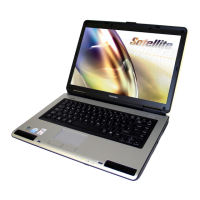

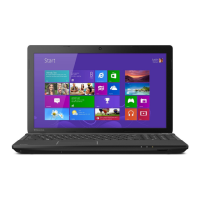
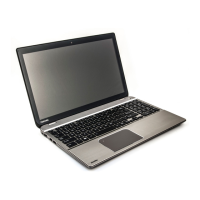
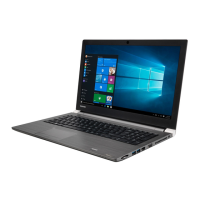

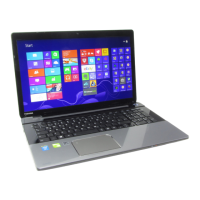
